|
INDIAN
FESTIVALS
Bakrid
Also Called As: Id-Ul-Zuha
Religion: Islamic
Bakrid is celebrated with ritualistic fervour in Andhra Pradesh and in
particular, the old city of Hyderabad. Bakrid is an important festival of
Muslims falling in the last month of Islamic Calendar. It is also called as Id-Ul-Zuha,
which coincides with the Haj pilgrimage at Mecca. The significance of the
festival is the commemoration of the ordeals of Prophet Ibrahim.
The Significance
Significance of Id-Ul-Zuha or Bakrid lies in the offering of an animal in
celebration of the festival Bakrid. As per the doctrine of Islam, sacrifice of
animals signifies the sacrifice of the follower himself and his readiness to lay
down his life, his interests and desires in the cause of the truth.
The Legend
According to popular belief, Prophet Ibrahim was put to a tough test by Allah to
prove his faith. He was asked to sacrifice his son Ismail and without any
hesitation Prophet Ibrahim blindfolded himself and made the offering on the
Mount of Mina near Mecca. When Prophet Ibrahim opened his eyes, he was
astonished to find a goat lying upon the altar and his son Ismail standing in
front of him. Ever since, followers of Islam all over the world offer sacrifices
on the festival day.
On this day devout Muslims of all ages offer special prayers at mosques in the
morning. Muslims sacrifice an animal - a goat or sheep, divide the meat into
three portions and distribute it among poor, friends and relatives and whatever
remains is for the family.
Bakrid or Valla Perunnal also called Id Ul-Azha or the 'festival of sacrifice'
is another Muslim festival celebrated by Shias and Sunnis alike in KERALA.
Bakrid falling on the 10th of Dhul- Hajj, the last month of the lunar year
(April) is celebrated to commemorate the willingness of Abraham to offer his
only son as a sacrifice in obedience to God's command.
On Bakrid, people dressed in their best clothes proceed to Id-Gali, the open
space set apart for public prayer. There are congregational prayer is held under
the leadership of the Imam. At homes, ceremonial prayers and sumptuous feasts
form part of the festival.
|
Buddha Purnima
Religion: Bhuddhist
Buddha Purnima means the 'full moon of the
Buddha'. Called SagaDasa in Sikkimese and Vishakha Puja in the Thervada
tradition, it is the most important of all Buddhist festivals. Commemorating the
birth, enlightenment and death of the Buddha, the day is considered more
auspicious than any other day of the year. Observed on the full moon day of the
4th month of the Tibetan calendar, corresponding to Vaishakha, it is a public
holiday in India.
Gautam Buddha was born in 544 BC in Lumbini, Nepal. Buddhist mythology is
replete with legends relating to his birth. According to a Tibetan belief,
Buddha Kashyapa had prophesied that he would be reborn inhuman form. This would
happen when the life-span of people living on earth became 100 years. His
immortal incarnation would be called Buddha Shakyamuni and he would be a teacher
to both the gods and humans. When the time was right, Buddha Kashyapa took the
form of a six-tusked young white elephant and entered the body of Queen Mayadevi,
wife of King Suddodhana of Lumbini, through the right side of her ribcage.
Mayadevi carried him in her womb for ten months. One day, while strolling in her
garden, she felt that she would soon give birth to her child. She grasped the
branch of a Sal (Shorea robusta) tree and yawned. Immediately, amidst anaura of
light, the child was born from under her right arm. He walked seven steps in
each direction and the earth shook in homage. The child was named Siddhartha.
The celebration of this festival has been recorded by Fa-Hien. The rituals
include prayers, sermons on the life of Gautam Buddha, continuous recitation of
Buddhist scriptures, meditation by monks and devotees, and the worship of the
statue of Buddha. Believers, who prostrate several times in front of the idol,
make offerings of incense, flowers, candles and fruit. The Bodhi tree is also
revered. Its branches are decorated with garlands and coloured flags. Rows of
lamps are lit around the tree, and milk and scented waters are sprinkled on its
roots. Good deeds are performed on Buddha Purnima with zeal, for it is believed
that the blessings earned for a virtuous act performed on this special day are
many hundred times greater than on other days. Buddhists free birds from cages,
distribute fruit and clothes to the sick and refrain from eating meat. The
mortal remains of the Buddha are taken out at the National Museum in Delhi for
public viewing. Many people assemble there to offer prayers.
The entire month of Vaishakha is considered sacred, so special prayers are held
on all its days in various monasteries. On Buddha Purnima, every sect of
Buddhism in India observes some distinctive rituals. In the monasteries of
Sikkim, the lamas are engaged in recitations of the scriptures from early
morning lamps in front of the statue of the Buddha. The Maharani Buddhists
organize a colourful procession of monks with gyalings and rabdungs. Kangyur
texts are also read.
The Ambedkar Buddhists also organize a pageant, but they include a photograph of
Ambedkar with that of the Buddha in their tableaux. Many seminars and lectures
are held in which eminent people participate. The poor and needy are given food
and money.
Christmas
Religion: Christianity
The name Christmas
is derived from 'Christ's Mass', the mass in honour of the birth of Christ.
Christmas is celebrated on the 25th of December every year, at the time of the
winter solstice. Many regard it as the most important of all Christian
festivals. It is a public holiday in India.
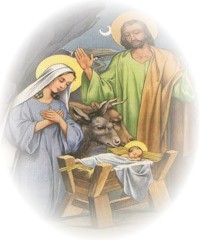
Christmas is a time for festivity. Prayers, merry making and sending cards are
part of the Christmas rituals. The celebration begins with a midnight mass on
the eve of the festival, as Jesus was born at midnight. This is followed by a
morning service and a mass at midnight, in accordance with the decree of the
Pope. To mark the event, churches and homes are illuminated with colourful
lights and decorated with streamers of many hues. Some Indian Christians light
oil lamps as well, perhaps because of the influence of the Hindu festival of
Diwali. Many families make tableaux to depict the birth of Christ, using their
imagination and creativity. Joseph, Mary, baby Jesus in a cradle of hay, sheep,
shepherds and the angels are crafted to enact the event. A decorated fir tree,
is also now synonymous with Christmas and often referred to as a Christmas tree.
Christmas celebrations in urban areas are very similar to those in the West.
Streamers, lights, balloons and buntings are used to add a festive look to
shopping centers. Special discounts, bargain offers and bonuses are offered to
make shopping more attractive. Friends and relatives exchange presents. Santa
Claus distributes gifts and sweets to children. Singing carols is also part of
the ritual. It is customary for families to eat Christmas dinner together.
Elaborate puddings, special cakes and wine are prepared. Roasted chicken takes
the place of the stuffed turkey of the West, for the meal. In the coastal
regions, people have fish.
In the tribal and rural areas of India, the menu is very different. Cakes made
of rice flour and bananas form part of the ceremonial feast. As a gesture of
goodwill, these confections are sent to homes which are in mourning. Women also
make thekudas and namkeens. In some parts of southern India, payas is
distributed among friends and relatives. Carol singing is also popular, but it
is accompanied by rhythmic dancing. The dance forms vary from region to region.
In the eastern states of Bihar, Assam, Manipur and Nagaland, it is customary to
intersperse the feast with tribal dances.
Among the orthodox, the festival is commemorated by prayers and pacificator
rites. Some sections of the Roman Catholics forsake eating meat during the
period known as the Advent, from the first to the 25th of December.
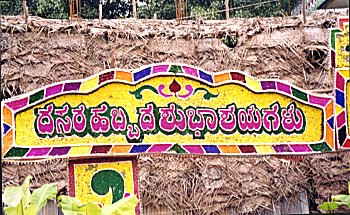 Dasara
Dasara
Religion: Hinduism
Dasara (a.k.a. Dusharah)
festival is celebrated typically in October. The mode and the fervor vary by a
great deal across the subcontinent. Shown above is a painting of the Dasara
celebration in Mysore.
Different parts of India celebrate
the festival in different ways. Some celebrate it as Navaratri, some as
Vijaya-Dashami, and some as Dussehra, in worship of Goddess Durga or celebrating
Rama's victory over Rawana. The celebrations vary from a day to nine days (for
Navaratri) to a month (for Mysore Dasara). The following pictures depict some of
the celebrations.
Diwali
Also Known As: Deepawali,Deepavali,Divali
Popularly Known As: Festival Of Lights
Religion:
Hinduism
Diwali, the festival of lights is an occasion for the invocation of the Gods of
prosperity and plenty, is celebrated with great pomp and splendour all across
India. The word Diwali is the shortened version of "Deepawali', which means
a cluster of lights or an array of lamps. The festival is celebrated on the 15th
day of Ashwin (October/November). This new moon night, or Amavasya as it is
called is thus turned into a bright and colourful night. For most of the people
it's a three-day celebration begins with the Dhan-Teras, on the 13th day of the
dark half of Kartik, followed the next day by the Roop Chaturdashi or Choti
Diwali in the 14th day, and by Deepavali proper on the 15th day Roop Chaturdashi/Choti
Diwali The next day after Dhanteras is Roop Chaturdashi when it is ordained that
the human form is kept clean, healthy and beautified in order to ensure the
Lord's blessings as it is one's human duty to look after the bodily form given
by God. The day dawns and the infectious excitement of Choti Diwali in the air.
A ghee lamp with wicks in four directions is lit along with 16 smaller lamps and
the house is readied for the main festival of Goddess Mahalakshmi the next day.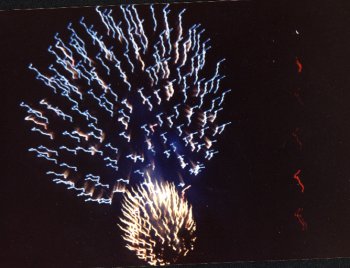
Deepawali - Row Of Lights
On Diwali, the number of lamps goes up to 26 to be lit at the place of the puja
and Kuber the God of wealth. Ganesha, the remover of obstacles, Lord Indra, the
repository of power and happiness, Lord Vishnu, the bestower of all wishes and
Goddess Saraswati, the fountainhead of knowledge, are invoked along with
Mahalakshmi. Sweets are distributed among the poor and not so fortunate ones, to
share the bounty of the Goddess. The morning after, woman of the house are
supposed to beat bamboo winnow-baskets outside the main door signifying that as
the Goddess Mahalakshmi has come to stay in the house, there is no place for
poverty. Beating and thrashing sounds are made to chase him away, singing a
particular song.
Legends & Beliefs
The related tales about the reason for celebrating Diwali are several. The most
popular one being the return and coronation of Lord Rama after a 14-year exile
to Ayodhya after his victory over evil in the form of Ravana. According to other
traditions, it is said that this was the day of that King Bali made the Paatal
Lok his chosen land and so Lord Indra celebrated that fact that his Kingdom of
heaven was saved. It is also believed that the souls of ancestors come to visit
their homes on the new moon day of Diwali. Lamps are lit to guide the departed
souls on their way to their homes. However, this mythology is associated with
Deepavali only in parts of Western and Southern India; it is not known in the
northern and eastern regions. In South India people take an oil bath in the
morning and wear new clothes. They partake of sweetmeats and light fireworks,
which are regarded as the effigies of Narakasura who was killed on this day.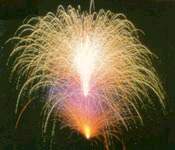
Delicious homemade sweets are packed in decorative boxes and sent to friends and
relatives along with wishes for along and prosperous life. Many people even
prepare meals for the less fortunate, donate a part of their month's earnings to
temples and pray well being for their families. Among the business class Diwali
is the time of presenting employees with the gifts and bonuses in appreciation
for their dedicated service.Shopkeepers closing their occasions or this time of
the year, usually place their ledgers in front of Lakshmi, the Goddess of
wealth. Laksmi is believed to visit homes and shops that are well lit, families
decorate their homes with flowers and paper chains. People don their best
clothes, or buy new ones, children are given presents and sweets and season's
greetings are exchanged through visits or Diwali cards. All in all these Diwali
celebrations indicate the socio-religious bond that people share with each
other. So celebrate the joy of lights and let the deafening roar of fireworks
chase away the demons lurking in the dark.
Diwali in India is equivalent to Christmas in the West. Therefore it is also the
time when people get the festival bonus to their salaries. It marks the
beginning of the New Year for a large majority of Hindus, especially the trader
community. Preparations for the festival begin many days prior to Diwali. It is
time for a thorough cleaning of the house, for the belief is that Lakshmi will
enter clean and nicely decorated houses. The scientific reason is that the
monsoon is a time for insects and fungus to breed. With the end of the monsoon,
homes need to be cleaned and painted, and belongings aired and dried before the
onset of winter. The festival itself extends over about a week even though the
most important day is the new moon day.
Easter
Religion: Christianity
Easter is the oldest of all Christian
festivals. It embodies the spirit of life for devotees, as they recall the
widely believed Christian legend of the resurrection of Christ. Easter honors
day and its brightness. It marks the transition from night to day, and from
death to life. A time for joy and happiness epitomizing new beginnings, it
rejoices at the spring harvest season.
According to the Bible, on the Friday after the Passover feast in Jerusalem,
Jesus was sentenced to death at the instigation of some Jewish priests. They
believed that he was misleading the people by telling them not to pay taxes to
the emperor. They also accused him of falsely claiming to be the Messiah. Jesus
was tried and crucified along with two criminals. After he was declared dead, a
man named Joseph took his body down from the cross, wrapped it in a linen sheet
and placed it in a tomb that had been dugout of solid rock. Some women from
Galilee saw that the body had been placed in the grave without being anointed
with any of the customary spices or perfumes. They went home and prepared the
spices and perfumes. The following day was Sabbath, so they rested, in
accordance with the decree of the Jewish law. Very early on Sunday morning, the
women went to the tomb with the spices.
They saw that the stone had been rolled away from the entrance of the tomb, but
they could not find the body of Jesus inside. Suddenly, they saw two men in
bright shinning clothes standing beside them. The men, who were angels, asked
the women why they were looking for the body of a man who had been raised and
was alive. The women ran to tell their families and the good news spread like
wildfire. People rejoiced at the return of the son of god. As it is believed
that the resurrection took place on a Sunday, the feast too is celebrated on a
Sunday on varying dates between March 22and April 25 and is therefore called a
movable feast. In India, Easter is observed on the first Sunday after the full
moon following the vernal equinox.
Holi
Celebration: Festival Of Colours
Religion: Hinduism
Holi is all about having fun, playing with colours and getting doped, all with
the permission of the Gods. Holi heralds the end of winter and the beginning of
the spring. It is a joyous celebration of the rejuvenation of nature, and
renewed hope of happiness and peaceful coexistence. People throw coloured water
and powders (gulal and kumkum) at each other and make merry. Singing and dancing
add to the gaiety of the occasion. Holis Or Bonfires
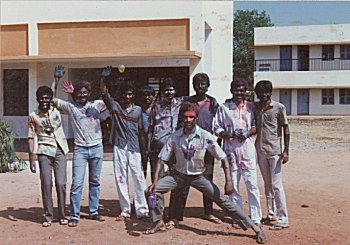
The night before the full moon, crowds of people gather together and light huge
bonfires to burn the residual dried leaves and twigs of the winter.
Metaphorically though, the fire is meant to signify the destruction of evil -
the burning of the 'Holika' - a mythological character. The heat from the fire
is also a reminder that winter is behind and that the hot summer days are ahead.
On the next day, people of all ages come outside and playfully drench each other
with coloured water. Brightly coloured powders are applied on faces, and there
is plenty of music, dance and sweets to fill the rest of the day. The exuberant
display of colours symbolises the advent of a colourful and prosperous spring
season. It's Association With Lord Krishna Holi is also associated with the
immortal love of Krishna and Radha, the day begins with worshipping Krishna by
lovingly smearing his idol with 'gulal' - the colours used to play Holi. This is
a festival that is as much a gateway to celebrate the arrival of spring as much
as it is a way to celebrate the season of love.
Holi is also an occasion for the celebration of the burning of Kama, the Hindu
cupid, with the fire that emanated from Lord Shiva's third eye. But he was
brought to life again when his wife, Goddess Parvati, implored Shiva for mercy.
On The Day Of Holi Smearing colours on friends and dear ones is the basic idea
of Holi, no one is spared. Both the young and the old enjoy throwing water
balloons, dry colours, and washable dyes on anyone in sight on the day of the
Holi. People go around in streets, with tin drums, armed with tonnes of colours
and big syringes filled with coloured water and at the end of the day no one
will even remotely resemble themselves.
Holi is also synonymous with bhang, which is consumed by many in the form of
ladoos and ghols. One could get away with almost anything on this day; squirting
coloured water on passers-by and dunking friends in the mud pool saying "bura
na mano, Holi hai" (don't feel offended, it's Holi). Holi is the time when
people from all castes and social strata come together forgetting all past
differences and grievances.
The festival is a favourite with most Indians for being the most colourful and
joyous of all. Every year it succeeds in bridging the social gap, between
employers and employees, men and women. People visit homes, distribute sweets
and apply gulal (colour) on each other, signifying the colourful and happy
spring times ahead. They greet each other, embracing three times.
Apart from this usual fun with coloured powder and water, Holi is marked by
vibrant processions, which are accompanied by folk songs, dances and a general
sense of abandoned gaiety.
Id-ul-Fitr
Religion: Islamic
Id-ul-Fitr means the 'festival of breaking the fast'. Fitr is derived from the
word fatar meaning 'breaking'. Another connotation suggests that it is derived
from fitrah or 'alms'. Certain Sunni Muslims believe that fitr comes from fitrat
meaning 'nature' and Id-ul-Fitr is the celebration of god' smagnanimity in
providing nature to man.
Celebrated on the first day of the new moon in Shawwal, it marks the end of
Ramzan. In the morning everyone bathes, wears new or clean clothes, applies
perfume, eats dates or some other sweet before walking to the mosque for Id
prayers. Men wear white clothes because white symbolizes purity and austerity.
On this day, according to the Quran, Allah has ordained a dole for every Muslim
who is free and is inpossession of almsworthy capital. This charitable gift,
called Sadaqah Fitr, is a dole to break the fast. It is to be given to a needy
person as thanksgiving. Even one who has not kept the rozas is expected to give
alms.
The amount to be gifted must be in excess of one's essential needs and free from
all encumbrances of debt. Food grains or their cost are permitted to be donated.
The Quran also specifies the grain and their quantities. A person should give
3.5 lb of wheat or its flour per head, or 7lb of barley per head or their cost.
Do Rakat Namaz is performed in the mosque. These prayers can be read anytime
between sunrise and just afternoon. In India, it is customary to say them in the
morning. Even women in purdah attend the namaz prayers in special chambers in
the metropolitan cities. Id milans are part of the rituals in which people
embrace each other three times, as is laid down in the Quran.
The festival originated when after proclaiming Ramzan as the period of fasting
and austerity, Prophet Muhammad announced a day for celebrations to reaffirm the
feeling of brotherhood.
Women prepare sweets at home .Sevian, or vermicelli cooked in sweetened milk, is
popular. People then go for Id milans. Some people visit cemeteries and stay
there for many hours, often even camping out overnight. This is perhaps to
honour their ancestors and to be with their spirits. To a devout Muslim, Id is a
time to forget all past grievances.
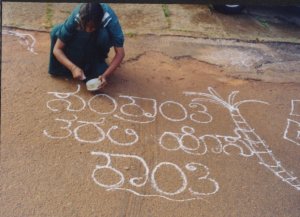 Makara
Sankranti (Pongal)
Makara
Sankranti (Pongal)
Religion: Hinduism
This holy day marks the commencement of the
Sun's northern course in the Heavens, known as the Uttaraayana patha.
This turn in the Sun's course takes place at the point of time when it enters
the sign of Makara or Capricorn. Interestingly, this is the only festival
in Hindu calendar that follows a solar calendar and is celebrated on the
fourteenth of January every year (all other Hindu festivals are computed using
the lunar calendar).
Navroj
Religion:
Parsi, New Year
Navroj
is the first day of the first month of the Zoroastrian year. Struggle
for good against Evil With Humata (good thoughts), Hukta (good words) and
Havarshta (good deeds). Thus spoke
Zoroaster, the great prophet of Iran to his followers who in India are known by
the name of Pasis. "There is but one path, the path of ASHA. All other
paths are false paths" - YASNA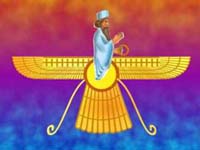
Zoroastrian
is monotheistic in its higher ideology having AHURA MAZDA as its Supreme Deity
and AHRIMAN as a lesser power of evil, which continually retards the smooth
progress of good-universe is conceived as a battlefield between Ahura Mazda and
Ahriman. In this confrontation, Ahura Mazda will ultimately defeat Ahriman.
In
the Zoroastrian religion, the theory of Re-incarnation does not exist FIRE is
looked upon as a visible symbol of godhead and it is believed that the Sacred
Fire was brought to earth from heaven by the prophet himself. In Zoroastrian
temples that are known as Fire temples, fire is kept burning all the time. These
temples are tended by Priests called Jozdalhregavs.
Over
3000 years ago Shah Jamshed of the Peshadian dynasty ascended the throne on
"NAVROZE" - nav meaning new and roze meaning day. It was the day of
the Equinox - a day when light and darkness stand equal on the scale of space
and time when the length of the day equals that of the night. That particular
day came to be known as Jamshed Navroz and is celebrated even in modern times
with lot of feasting.
Navroz
means spring when Mother Nature casts off everything that is old or super-flows
and dresses herself like a young bride in every vibrant colour and hue,
rejoicing in her own pure spiritual beauty. Thus Navroz is a new dawn in
everyone's life.
Men,
women and even children wake up early, bath and dress up in new clothes. They
decorate the threshold and steps of their houses with coloured powders, light
incense sticks and sprinkle sandalwood powder on live coals, kept in a censor.
All this not only is auspicious but also is meant to purify the air.
Food
plays a very important role as a significant part of all Parsi festivals. Parsi
food is a delicious blend of West Indian and Indian cuisine. Parsis being
non-vegetarian, fish, mutton, chicken, nuts, spices and fruits are bought a day
before and a variety of dishes are prepared for the following day of Navroz.
For
breakfast on the day of Navroz two special dishes are served. One is the "Ravo"
made with Suji, milk and sugar and the other is fried vermiceli cooked in sugar
syrup and sprinkled with raisins and lot of almond slivers. After breakfast all
the family member go to the nearest Fire Temple or Agiary as it is called. In
the temple a "JASHAN" - a thanks giving prayer is performed by the
priest and each one of the assembled gathering offers sandalwood to the Holy
Fire. As per the Parsi custom everyone has to cover their heads while praying
inside the temple. Children put on cops of gold or silver brocade, men put on
black velvet caps and the women pull their sari pallus over their heads. After
the "Jashan" ceremony all people greet each other by saying "Sal
Mubarak".
Lunch
consists of Pulav, rich with nuts and saffron, fish in green masala and spicy
chicken curries. In Parsi community besides all the delicacies, cooking plain
rice and moong dal is a "must" on this Navroz day. Food packets and
clothes are handed over to the poor Parsi families by the children of the
family. Parsi children are thus taught to give and share with others.
Throughout
the day on this festival of Navroz, there is much visiting of friends and
relatives. Every visitor is offered some sweet and a glass of "faluda"
- a sweet and chilled vermicelli and flavoured with rose essence. In all Parsi
homes a silver tray is kept ready with roses, coconuts and kumkum for `tilak'.
Rose water is freely sprayed on every visitor as he enters. By this time the
artistic and coloured designs on the doorsteps are smudged and messy but no one
pays attention in the hilarious mood of the festival.
Rakshabandhan
(Rakhi) Festival
Religion: Hinduism / Secular
The brotherly duties and sisterly
love are symbolized during the Rakshabandhan (ruk-shaa-bum-dha-na) festival in
India. Women, old and young alike tie specially made threads and thread watches
(rakhis) to their brothers to ensure their welfare, and protection from
the evil.
The festival has evolved in the
recent times and the symbolism has been changed to connote 'brotherly love'. The
all male volunteers of the Rashtriya Swayamsevak Sangh (the RSS), engage in a
large celebration, tying the rakhis to each other, symbolizing universal
brotherhood. It is used by many girls to keep unwanted romantic advancements by
boys also.
Onam
Religion: Secular. Mainly in Kerala
The Harvest Festival
Onam, the harvest festival is the most popular festival of KERALA. A festival
that celebrates a happy blend of myth and reality, Onam is part of the cultural
repertoire of every Malayalee.
It brings back nostalgic memories, carried on the wings of folklore, of a bygone
Utopian era of prosperity, equality and righteousness, under the golden reign of
Mahabali. Year after year, for centuries, the people of KERALA, irrespective of
caste, creed or colour, join together to welcome back their vanquished king. The
ten-day Onam festival falls in August-September, coinciding with the beginning
of the harvest season.
The Legend
According to local belief, in a war that took place between the gods and the
demons, the demons won. Deeply hurt by the defeat of the gods, Aditi, their
mother prayed to Lord Vishnu to destroy Mahabali, the demon king.
Consequently, Lord Vishnu, in the guise of a Brahmin boy, Vamanan, went to
Mahabali and asked him to grant him three steps of land. The wish was granted
and Vamanan covered the whole land with his two steps and then he came back to
the King asking him where can he place the third step.
The king to honour his word, offered his head as the third step. Vamanan pushed
Mahabali deep down into the earth. Pleased by his honesty and generosity, the
lord in turn granted him a wish that he could he could visit his kingdom and
people on a particular day once a year.
The Festivity
Preparation of a floral carpet called "Athappookkalam" in front of
houses, from the first day of 'Atham' to the tenth day of 'Thiruvonam' is part
of the festivities, which is a symbolic gesture to welcome King Mahabali.
The state government conducts Tourism Week celebrations in connection with Onam,
showcasing the gems of KERALA's culture. Onam resonates with Carnivals, Boat
Races, Dance, Music and Feast.
A sumptious meal on plantain leaf and the traditional sweet dish of KERALA 'Payasam'
etc are served in every house The pomp and pageantry of Onam reflects the
Keralite's zest for all the beautiful things of life.
Ugadi
Celebrated By: Andhra, Karnataka, Maharastra
Marks: The beginning of the New Year
Ugadi is the New Year's Day for the people of Andhra Pradesh and also for the
Telugu people all over the world. Those who live north of the Vindhya hills
observe it as "Barhaspatyamana". People living to the south of the
Vindhya hills observe it as "Sauramana" or "Chandramana".
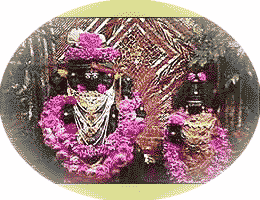
A Unique Ritual
There is a peculiarity about the practices of the various sects of Brahmins; one
who is not conversant with them finds it difficult to understand their meaning.
Even though they are all Brahmins certain differences in their lineage may be
traced among them. These become manifest in their distinctive calendars where
the dates and months vary. Some have calculations according to the solar system,
and others according to the lunar system; with the result that despite all being
Brahmins the New Year differs among different sects. Thus there is a Telugu New
Year's Day, a Tamil New Year's Day, and a New Year's distinct from these in the
almanac of North India.
According to Chandramana, Ugadi is celebrated on the bright fortnight ('Shukla
Paksha') of the first month ('Chaitra Masa') in the first season of the year
i.e. Spring ('Vasanta-Ritu'). As all these important elements are present, this
day has special significance marking the commencement of a New Year.
Ugadi is celebrated with festive fervour in the states of Maharashtra, Karnataka
and Andhra Pradesh. While it is called Ugadi in Andhara and Karnataka, in
Maharashtra it is known as "Gudipadava".
On Ugadi day, people wake up before the break of dawn and take a head bath
after, which they decorate, the entrance of their houses with fresh mango
leaves. The green mango leaves tied to the doorway signify a good crop and
general well being. It is noteworthy that one uses mango leaves and coconuts (as
in a 'Kalasam', to initiate any puja) only on auspicious occasions to propitiate
gods.
People also splash fresh cow dung water on the ground in front of their house
and draw colourful floral designs. This is a common sight in every household.
People perform the ritualistic worship to God invoking his blessings before they
start off with the New Year. They pray for their health, wealth and prosperity
and success in business too. Ugadi is also the most auspicious time to start new
ventures.
Special Delicacies
It is a season for raw mangoes spreading its aroma in the air and the fully
blossomed Neem tree that makes the air healthy. Also, jaggery made with fresh
crop of sugarcane adds a renewed flavour to the typical dishes associated with
Ugadi.
In Andhra Pradesh, eatables such as "Pulihora", "Bobbatlu"
and preparations made with raw mango go well with the occasion. In Karnataka
too, similar preparations are made but called "Puliogure" and "Holige".
The Maharashtrians make "Puran Poli" or sweet 'Rotis'.
Ugadi is thus a festival of many shades. It ushers in the New Year, brings a
rich bounce of flora and fills the hearts of people with joy and contentment
Vinayaka Chaturthi
Religion: Hinduism
Ganesha Chaturthi is one of the most popular Hindu festivals. This is the
birthday of Lord Ganesha. It is the day most sacred to Lord Ganesha and falls on
the 4th day of the bright fortnight of 'Bhadrapada' (August - September).
Ganesha Chaturthi is celebrated throughout India, as well as by the devoted
Hindus all across of the world.
Lord Ganesha-The Lord Of Power And Wisdom
Lord Ganesha is the elephant-headed God. He is worshipped first in any prayers.
His names are repeated first before any auspicious work is begun and also before
any kind of worship is begun.
He is the Lord of power and wisdom. He is the eldest son of Lord Shiva and the
elder brother of "Skanda" or Kartikeya. He is the energy of Lord Shiva
and so He is called the son of Shankar and Uma Devi. By worshipping Lord Ganesha
mothers hope to earn for their sons the sterling virtues of Ganesha.
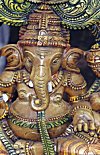
Legends
Lord Ganesha is very fond of sweet pudding or balls of rice flour with a sweet
core. On one of His birthday He was going around house-to-house accepting the
offerings of swat puddings. Having eaten a god number of these, He set out
moving on His mouse at night, Suddenly the mouse stumbled as it had seen a snake
and became frightened with the result that Ganesha fell down. His stomach burst
open and all the sweet puddings came out. But Ganesha stuffed them back into His
stomach and, catching hold of the snake, tied it around His belly.
Seeing this the moon in the sky had a hearty laugh. This unseemly behavior of
the moon annoyed Him immensely and so he pulled out one of His tusks and hurled
it against the moon, and cursed that no one should look at the moon on the
Ganesha Chaturthi day. If anyone does, he will surely earn a bad name, censure
or ill repute.
However, if by mistake someone does happen to look at the moon on this day, and
then the only way he can be freed from the curse is by repeating or listening to
the story of how Lord Krishna cleared His character regarding the "Syamantaka"
jewel. This story is quoted in the "Srimad Bhagavatam".
Ganesha and His brother Lord Subramanya once had a dispute as to who was the
elder of the two. The matter was referred to Lord Shiva for final decision.
Shiva decided that whoever would make a circuit of the whole world and come back
first to the starting Point had the right to be the elder. Subramanya flew off
at once on his vehicle, the peacock, to make a circuit of the world. But the
wise Ganesha went, in loving worshipfulness, around His divine parents and asked
for the prize; of His victory.
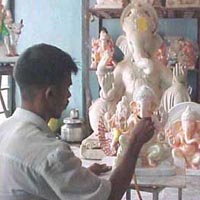
The Decorations
At home, people decorate the floors of their houses with "Kolams"
(designs) using rice flour. A fresh image of Ganesha in clay is made and
worshiped on this day. A decorated umbrella is placed behind the idol. On a
wooden plank, plantain leaf is placed and raw rice is spread over it. The idol
is placed on the plantain leaf and decorated with flowers. Then the puja is
performed, One hundred and eight different names of the Lord are repeated after
the preliminary ceremonies and 108 different flowers are thrown in worship over
them.
Different varieties of sweet puddings are prepared and offered to the Lord.
Different varieties of fruits are also offered. After the puja people listen to
the story of how Lord Krishna cleared His character regarding the Syamantaka
jewel. Then they bow to the Lord to seek His blessings. Take fresh spiritual
resolves and pray to Lord Ganesha for inner spiritual strength to attain success
in all your undertakings.
After being worshipped for two days, or in some cases ten days, the idol is
taken in a grand procession and immersed in the sea. Yudhisthira, the hero of
the Mahabharata, Damayanti, the queen of the Nishada King Nala, Indra, the Lord
of Heavens and even Krishna, the expounder of the Bhagavatgita are said to have
devoutly worshipped Ganesha to obtain their desired ends.

 Dasara
Dasara



 Makara
Sankranti (Pongal)
Makara
Sankranti (Pongal)


